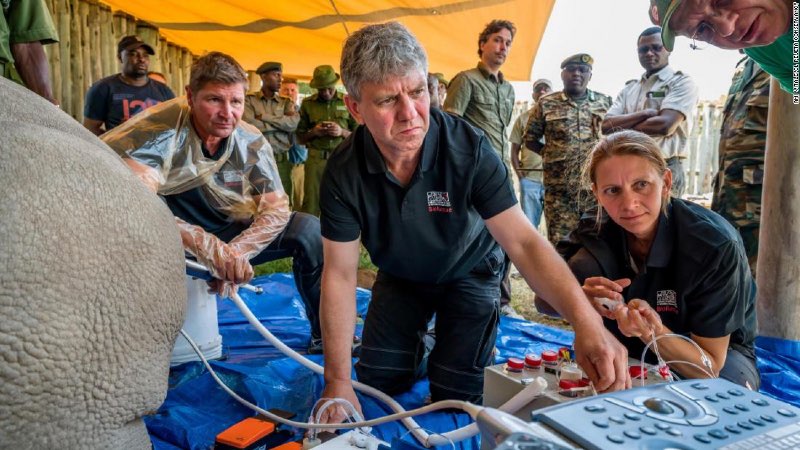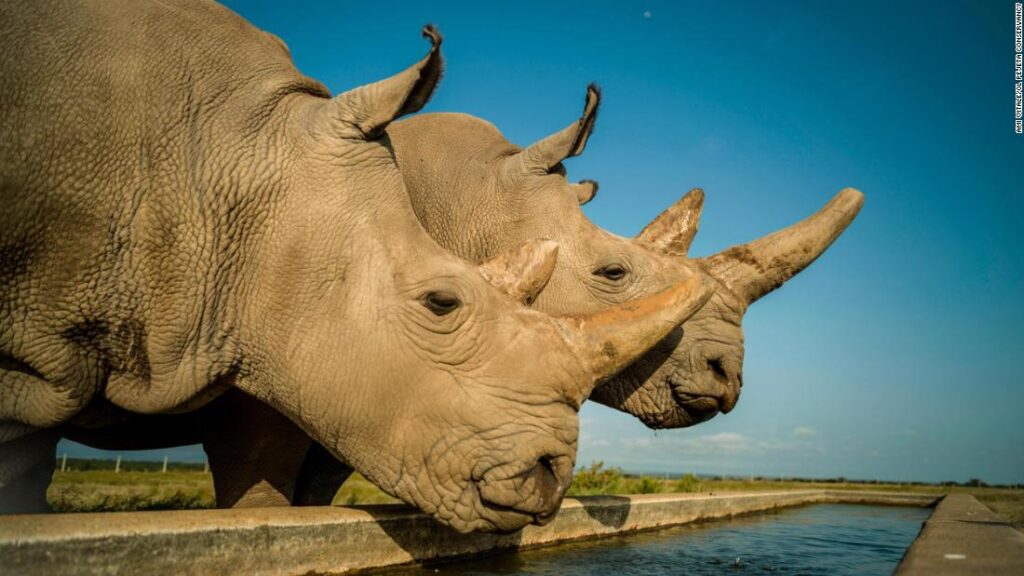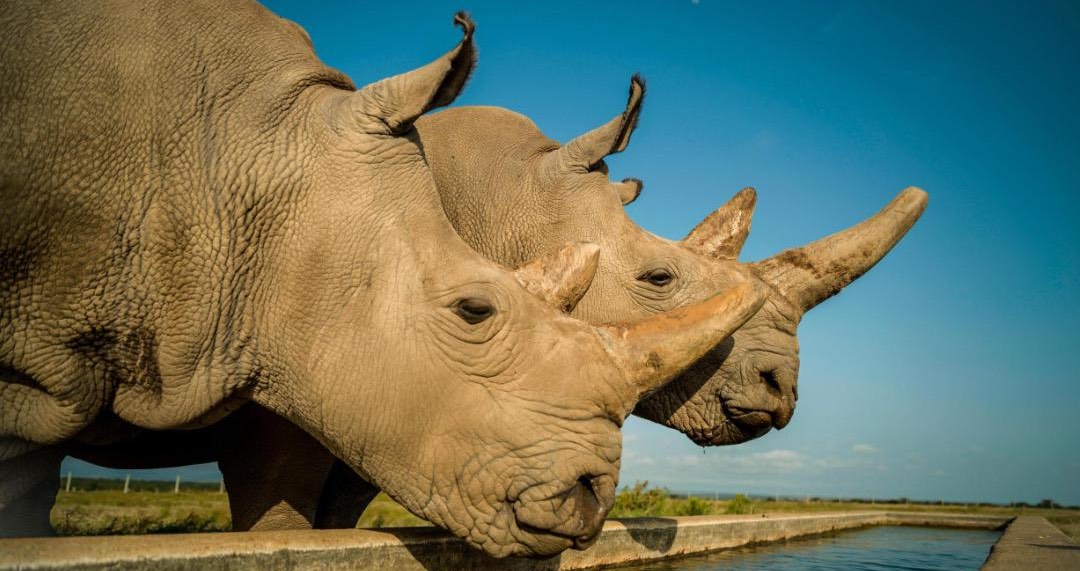Following up on their success of the last two years, the international collaborative effort to save the northern white rhino from extinction has extracted another 14 egg cells from Fatu, one of the two females rhinos that make up the living remainder of the species.

These would end up offering two viable fertilized eggs for the restoration program, and while conservationists often use phrases like “a glimmer of hope,” this particular success is far beyond a glimmer.
On a charter plane they went, overnighted from the Ol Pejeta Conservancy to Milan where they were taken to a lab in Cremona, Italy. There they were combined with the frozen sperm from Suni, a deceased male rhino of the same species born in 1980.
BioRescue, an NGO spearheaded by members of the Leibniz Institute for Zoo and Wildlife Research, the Italian laboratory Avantea, in Cremona, the Dvůr Králové Zoo in the Czech Republic, and Kenya’s Ol Pejeta and Kenya Wildlife Service, has been pursuing the project ever since the last male rhino died in 2018.
They now have a total of five fertilized eggs, essentially giving them five chances to get the next, and most critical part right: artificial insemination.
The brink of brinks

“We plan to have a calf on the ground in two to three years,” David Hildebrandt, a Berlin-based expert on wildlife reproduction, told Megan Bergman of The Guardian.
To make things more complicated, neither Fatu nor her mother Najin can bring a rhino calf to term. BioRescue will use a surrogate from the southern white rhino subspecies which diverged around one million years ago.
To help the scientists out, a sterilized southern rhino bull will accompany the female to help signal when she is in heat. Currently the embryos are stored in tanks of liquid nitrogen, at -196C°.
“Liquid nitrogen buys us time,” explained Hildebrandt, adding that it’s vital any living calves can join Fatu and Najin in life at least for a few years to learn vital information about white rhino society.
MORE: Rhino Poaching Plummets 53% During Lockdowns, Extending 5-Years of Success in South Africa
The embryos can work to prove concept and create more lifelines while science develops other, more radical methods of saving the subspecies.
This could include manufacturing eggs and sperm through Nobel Prize winning scientist Shinya Yamanaka’s method of changing skin cells to stem cells, and stem cells into the cells that make up sexual equipment.
LOOK: Orphan Baby Rhinos Heal With Help of Hand-knit Blankets
Apparently there are, incredibly, enough existing skin cells to create a stable and genetically diverse population that would be raised by surrogates, protected in sanctuaries, until 20 or 30 years when they may rejoin the spirits of their ancestors on the open plains of Kenya.
SHARE the Glimmer of Hope–Send This Story to Friends…




















